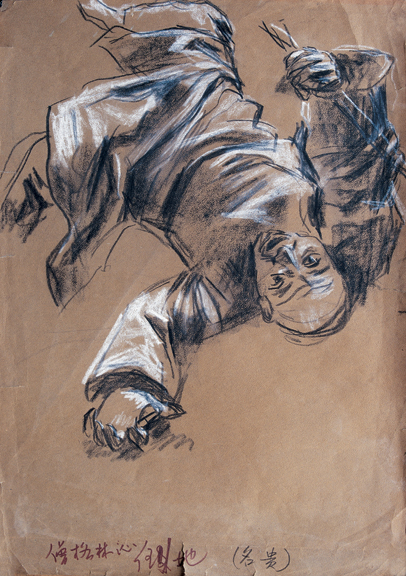The Second Period 1949~1976
The second stage in Mr. Qin Xuanfu’s art career is after the birth of the New China in 1949 to 1966, the beginning of “Cultural Revolution” .
After the birth of New China, Mr. Qin Xuanfu embraced the new life with great passion and his art career reached a brilliant new era. He followed firmly realism in his art creation. He worked hard to experience all aspects of life and to keep close relationships with broad masses. His paintings of this time reflect development in New China’s industry, agriculture and the people who participated.
(The oil painting of “National Day Celebration at the XinJieKou Square”, The group photo with faculties in Lankao county; The oil painting “Exam”. The oil painting “Harvest”, The oil painting “Plow”;
His oil painting "National Day Celebration" created in 1959 is a magnificent scene: a sea of people, at a grand occasion. Its imposing manner and holiday atmosphere created a tremendous impression that clearly demonstrated the strong emotion of the artist. There was no detailed figure portrait; yet, the emphasis on the combination of color and lights created a warm and joyful holiday spirit.
In his paintings “Mould,” and “The Welder,” both painted in 1958, we can feel the great passion of the author in modeling the workers' ordinary labors. We can also see his artistic style of making sharp contrasts of light and shadow.
(The sketch “Mould”, the painting “The Welder”, the oil painting “The Female Worker”; )
In his oil painting “Shanghai Harbor”, a busy harbor became a splendid, glorious place. The strokes are simple and free, but full of poetry. This painting was then selected and published in Chinese Oil Painting Collection in the Twentieth Century in 2001.
(The oil painting “Shanghai Harbor”)
The gouache “self-portrait” in 1954
The painting “The Spring in Yu Hua Tai” takes YuHua Tai in Nanjing as its theme. YuHua Tai is the center for war martyrs, who shed their blood in civil wars for the founding of New China. In the painting, the author applied a unique and unconventional design; he depicted a lively scene, full of sunshine and beautiful flowers. He seemed to tell us that our current happy life is coming from the blood of those martyrs.
(The oil painting “ Spring in Yu Hua Tai”, The oil painting “ Sino-soviet Friendship Sports Games”)
The original large oil painting “The Future of New China” has been lost, but two sketches remain.
(The sketches of “The future of new China”)
The oil painting “Picking the Lotus” was selected for the 2nd National Fine Arts Exhibition in 1956.
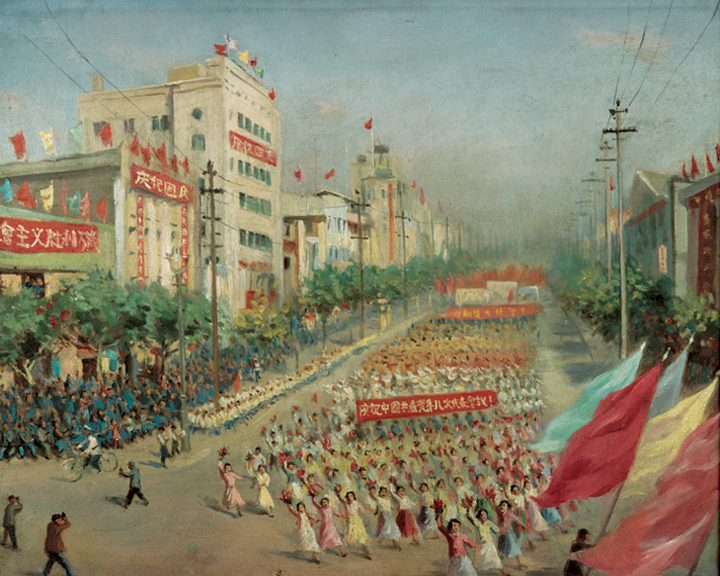
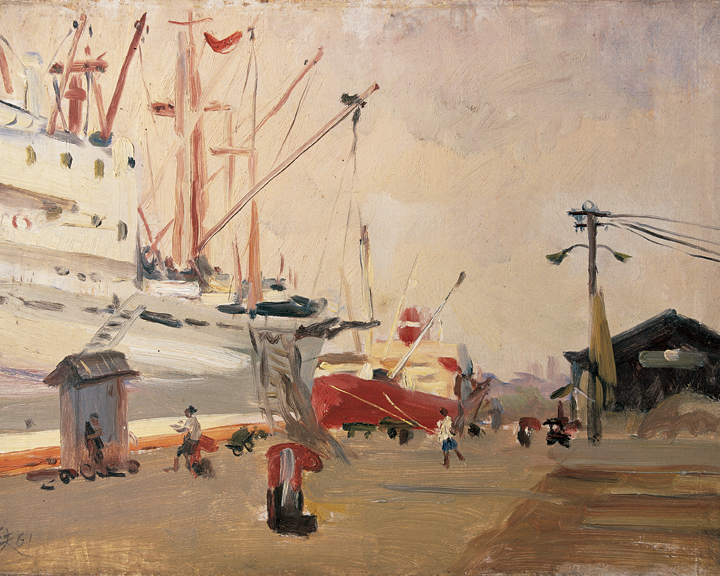
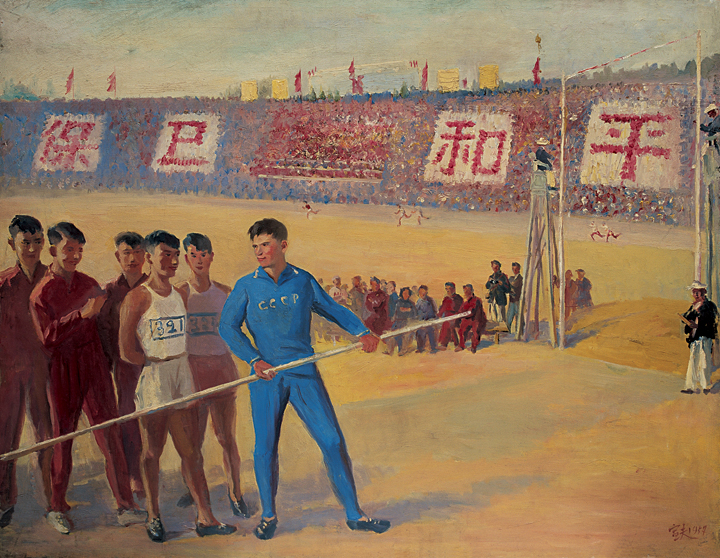
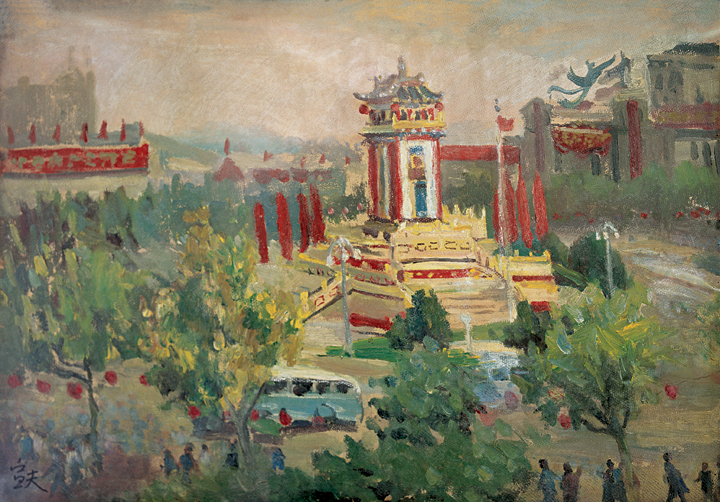
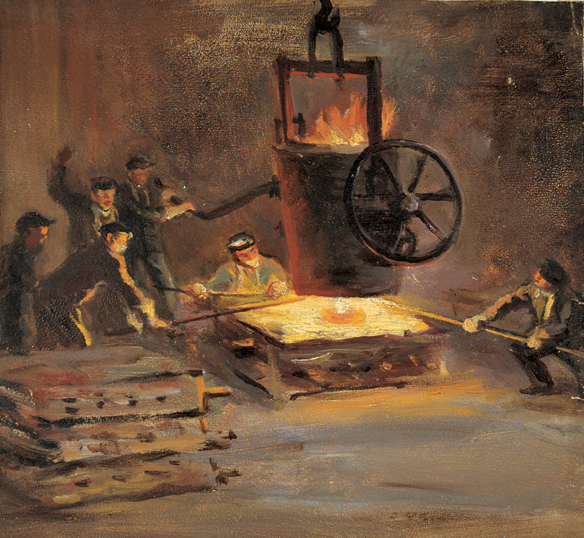
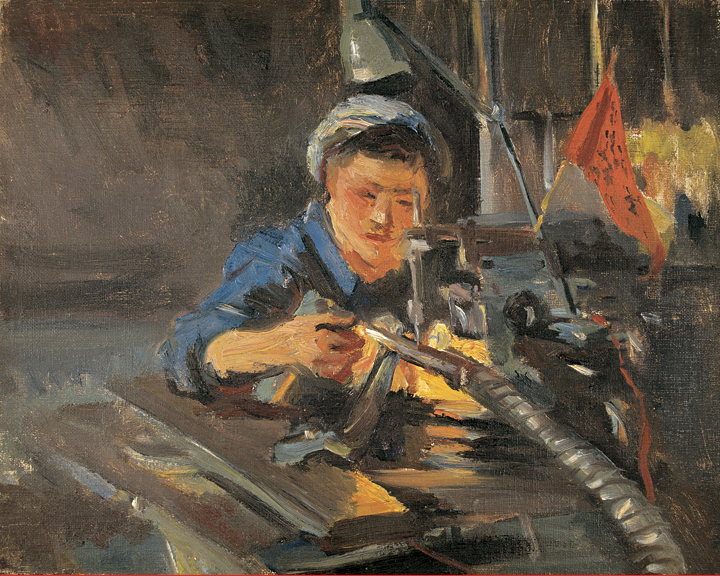
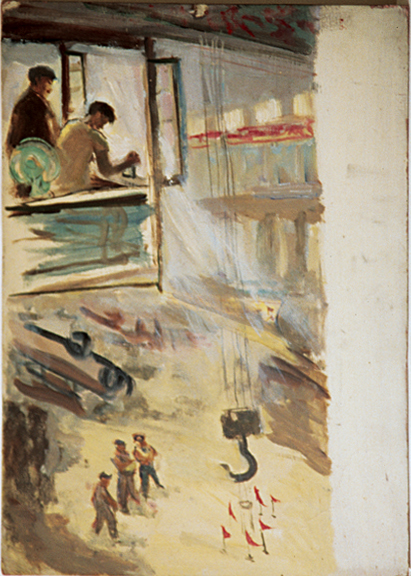
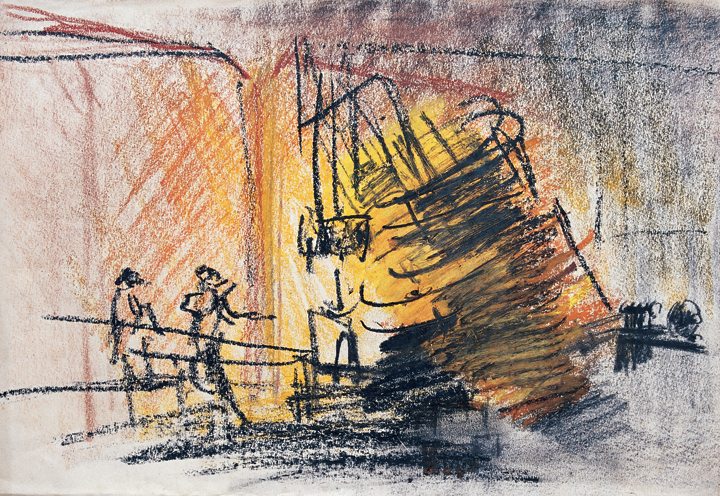
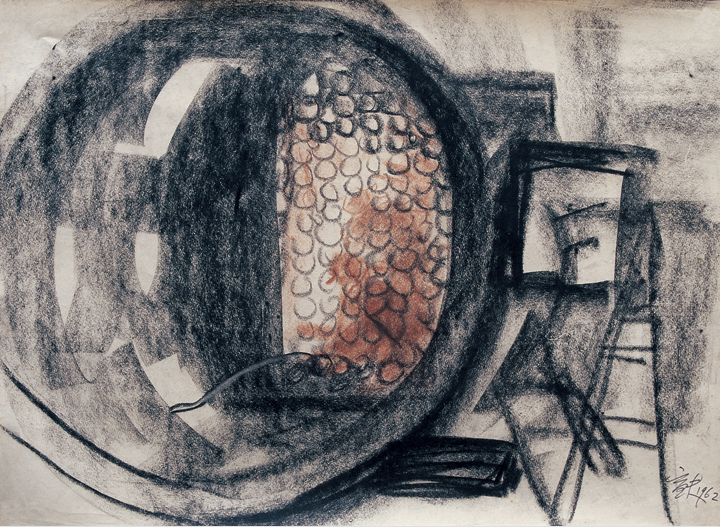
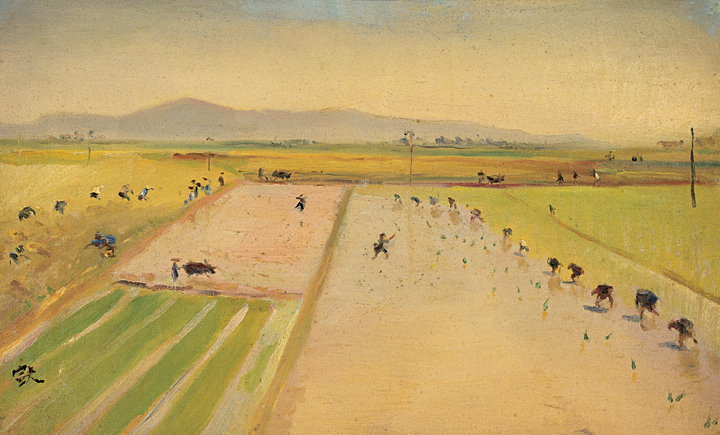
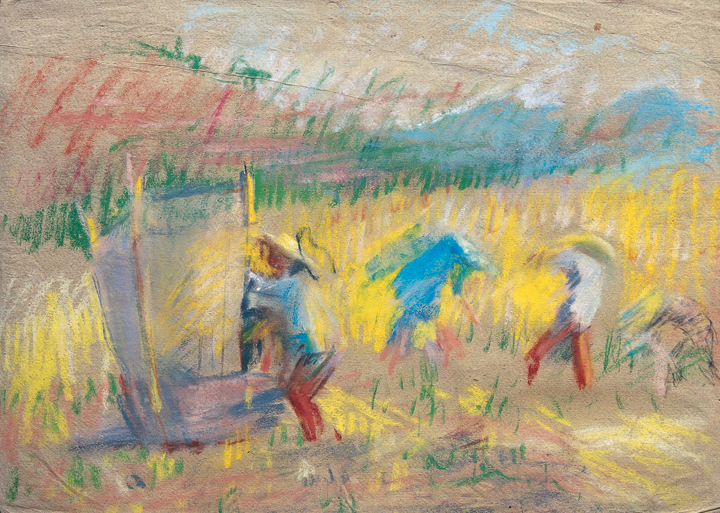
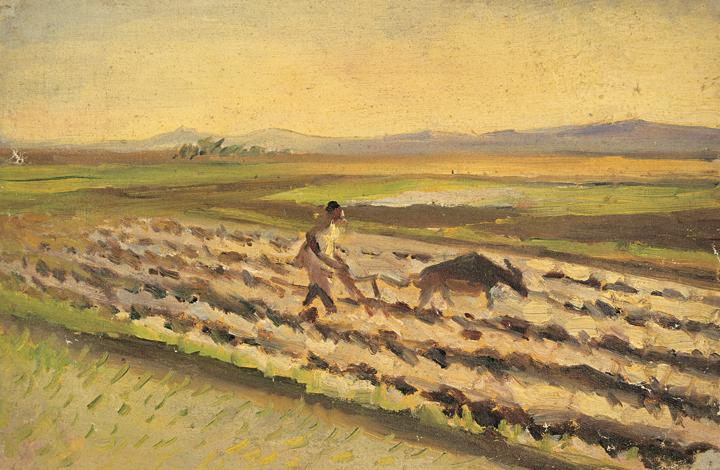
Mr. Qin Xuanfu also painted several paintings with historic themes. His painting “The Great War of Taipin Soldiers Against ZeGeLinXing Qing Army” is one of them. Unfortunately, the original painting was lost, but some drafts and figure sketches still remain. The painting, according to Xu Minghua, the well known artist in oil painting, “gives us a strong feeling of movement which added intenseness to the atmosphere. The painting also reminds me of Goya’s art.” This painting was collected by the Nanjing Taiping Heavenly Kingdom Museum.
(The draft of the oil painting “The Great War of Taipin Soldiers against ZeGeLinXing Qing Army” and figure sketches)
The Great War of Taipin Soldiers against ZeGeLinXing Qing Army (draft)
ZeGeLinXing Qing Fell (sketch)
In the 60ties of Twentieth century, Mr. Qin came to his optimum period of painting portraits. The portraits he painted not only the senior “Fish-man”, but also the young “Seaweeds Girl”, his style of painting is different from the Russian style of silver-gray tone, which was very popular in the art world at that time. He pursues bright colors with a free-lance pen tone, which makes the picture vivid and shows a sense of joy. The works of this period may be influenced by Renoir in France, but he does not pursue deformation in painting figures. Although the style of painting is fine, he has not painted or sculpted the craftsmanship at all, and always uses pen freely.
The oil painting ‘Seaweeds Girl” depicted a female worker, who grows seaweeds. With white hat and white clothes, her beautiful and healthy figure is full of life and energy under sunshine. This painting was published in “Fine Arts” magazine, 2nd volume, 1962 and was selected in the “Collection of Chinese Oil Paintings in the Twentieth Century” in 2001. This painting is currently collected by the Fine Arts Gallery in JiangSu Province.
(The oil painting “Seaweeds Girl”)
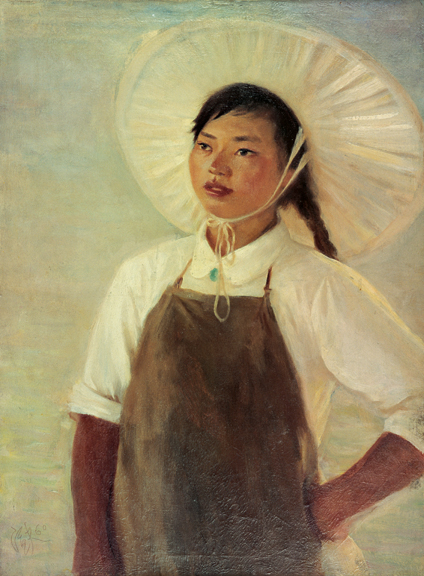
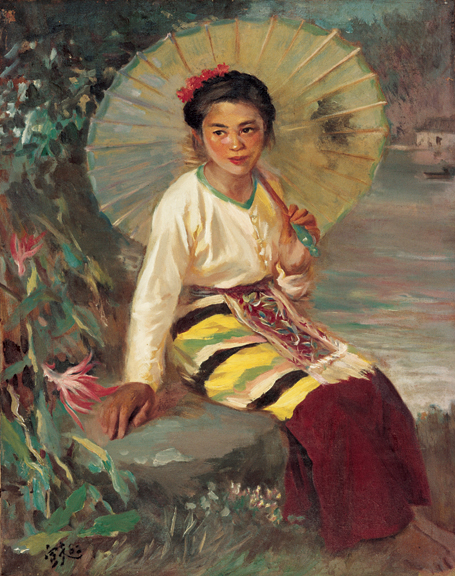
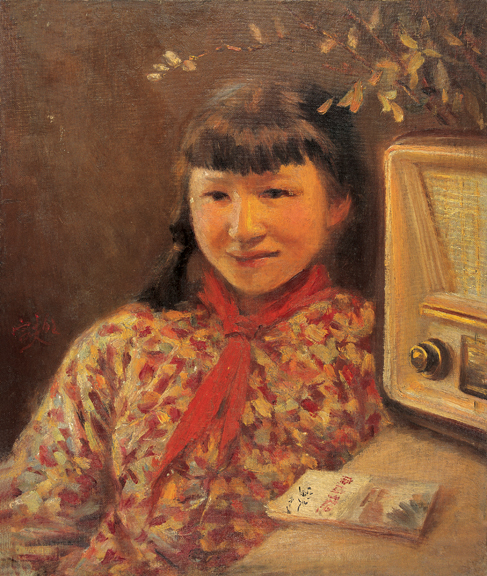
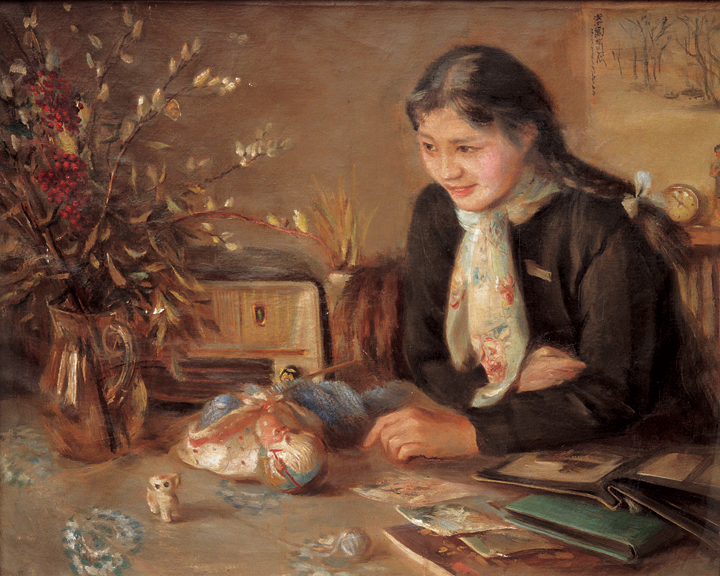
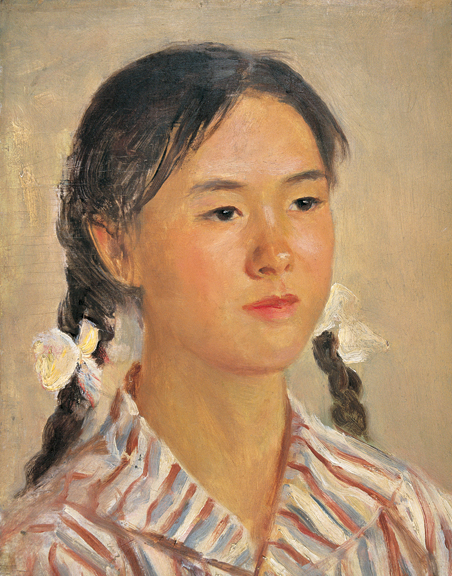
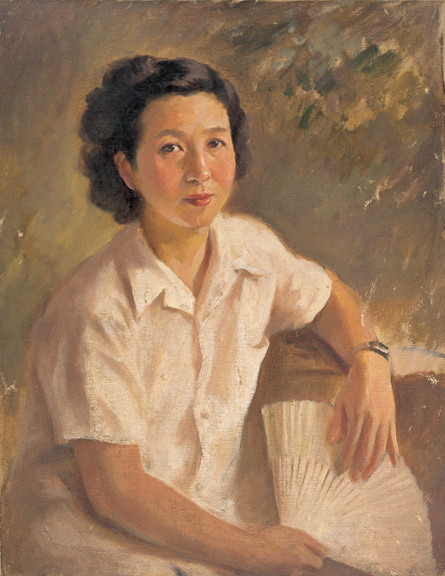
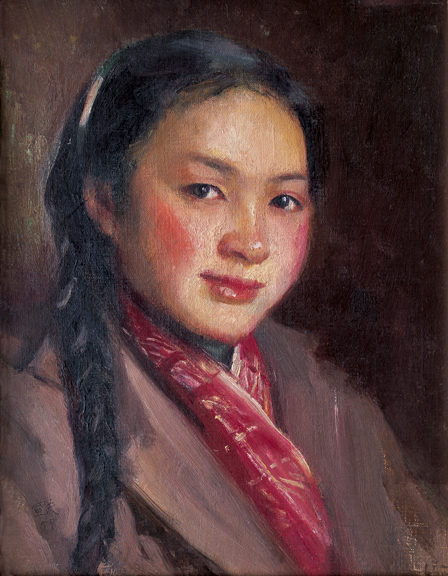
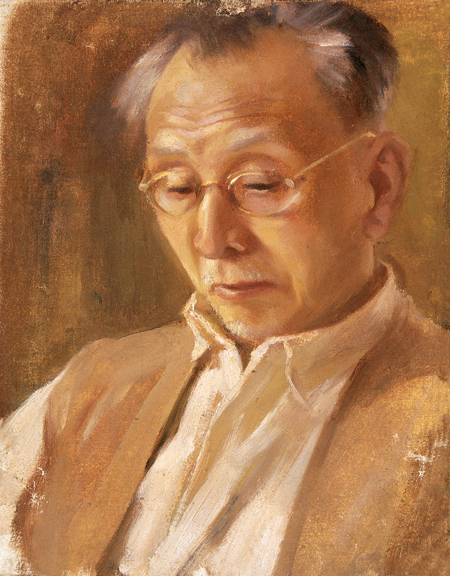
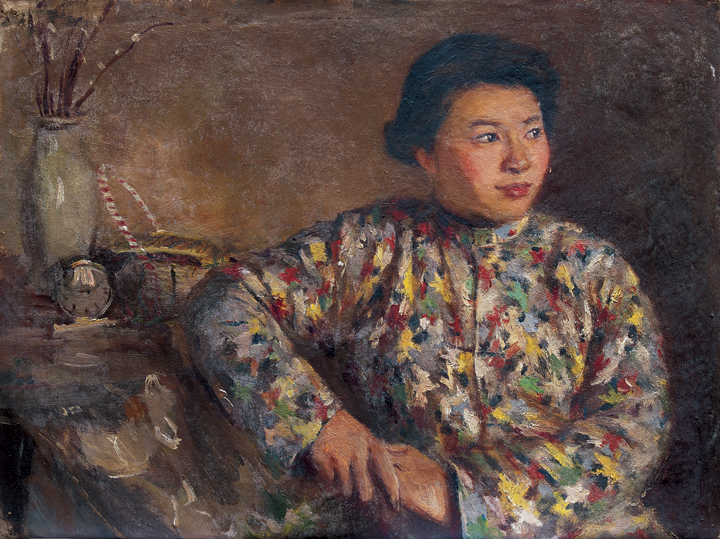
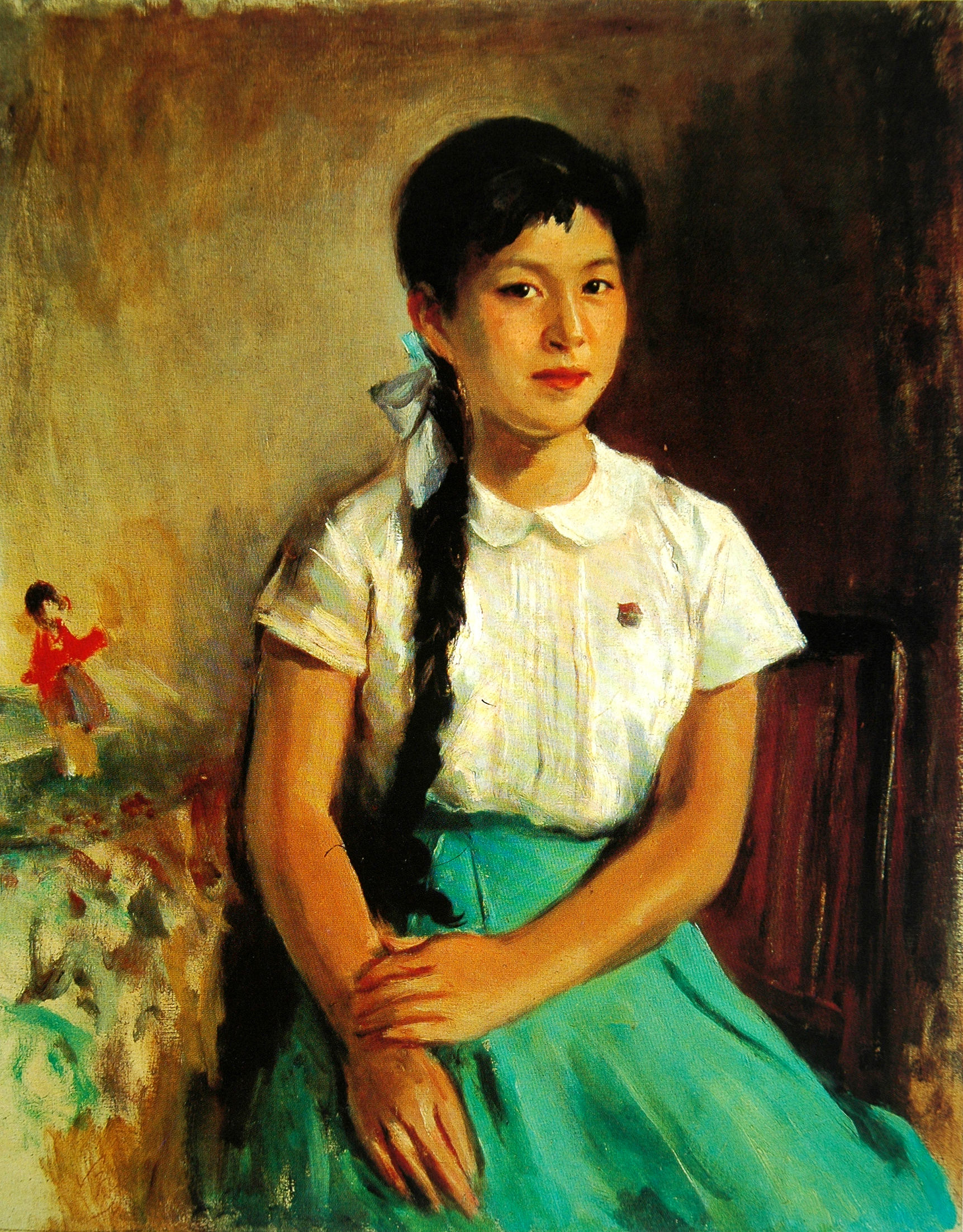
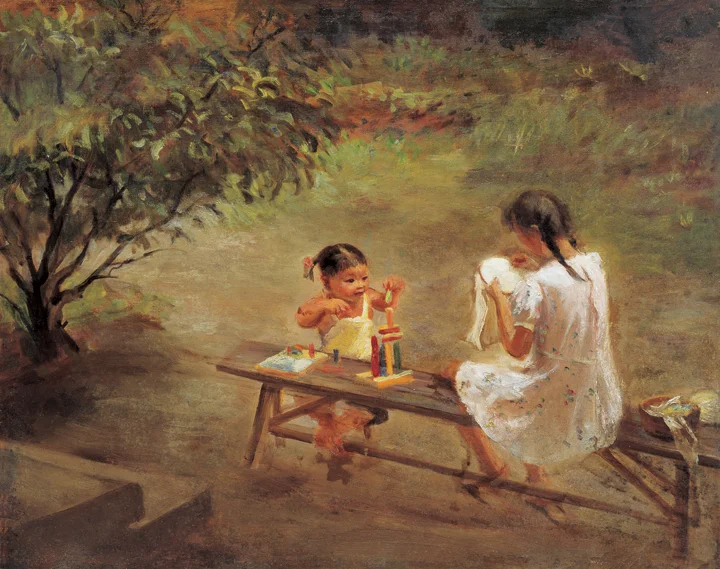
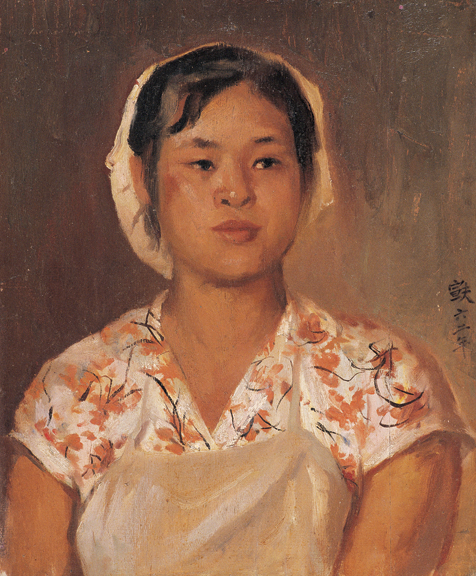
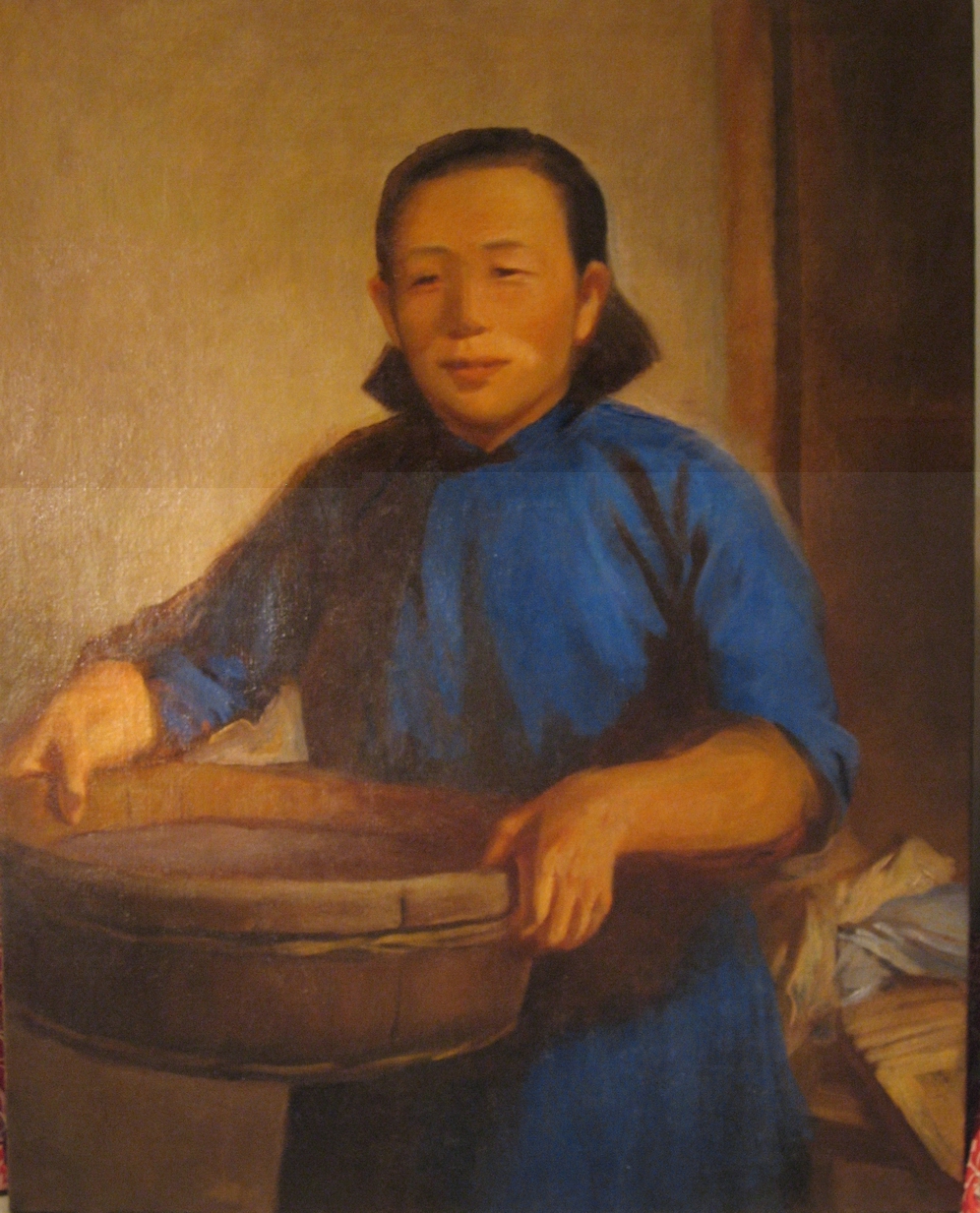
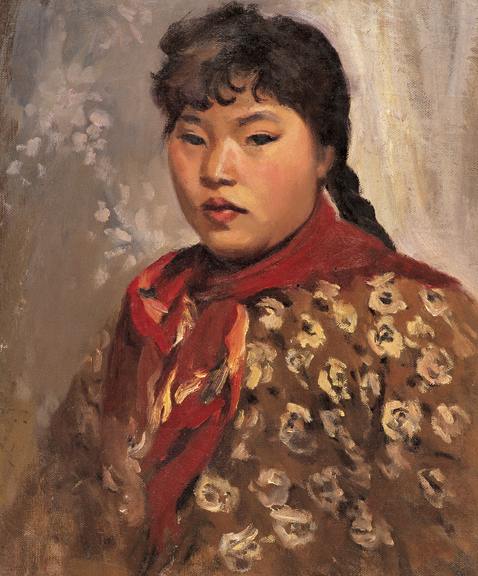

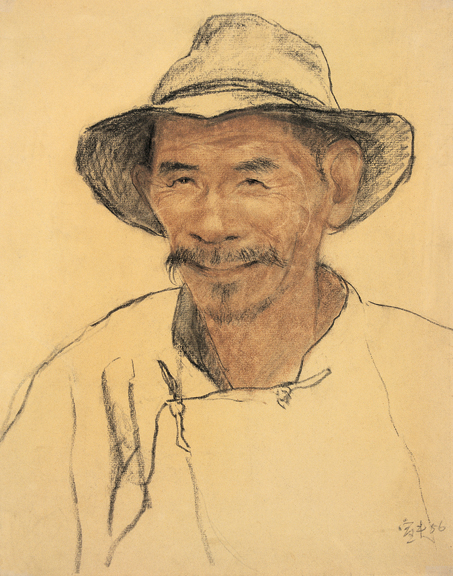
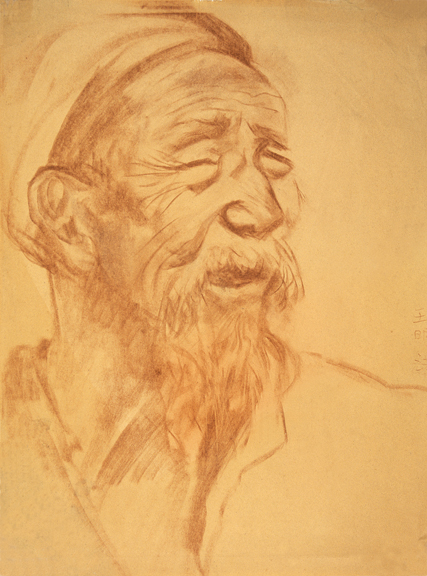
The oil painting “Spring in Southern China” depicted a minority girl with bright and beautiful colors. The white silk blouse, the colorful brocade skirt, the silk colored umbrella, and the glistering waves in the river enriches the scenery and gives life to the painting. (The oil painting “Spring in southern China”)
The oil painting “The Red Tie” is characterized by lively and detailed sketching skills with outstanding techniques to process lights and shadows under the lamp and day lights from the window, which give life to the painting. This painting was selected for the exhibition of National Fine Arts celebrating the Twentieth Anniversary of Mao Zedong’s Speech in Yanan. (The oil painting “Red Tie”)
The oil painting “Vacation at home” is rich with heavy colors. The detailed strokes depict vividly the attitude, emotions and even the skin color of the figure. The background decorations are also depicted vividly with details. The contrast of lights and shadows, are especially, very lively; the skillfully colored tie, the never fallen old man made of clay and a china cat with little flowers, glistering under lights, all give life to the painting. (The oil painting “Vacation at home”, The oil paint “Summer”, The oil paint “Youth”, The oil painting “Actress”, The oil painting “the portrait of Ningsheng”. The oil painting “Reading”, The oil painting “The portrait of Jing Sheng”, The oil painting “College Student”. The oil painting “Little sisters”)
Qin also painted the portrait of ordinary people, such as “The Textile Female Worker”, “A Village Girl”, “An Outstanding Worker”; water color paintings “Aunt Lu--An Exemplar of Cleaning”; and sketches “Farmer Liu Zhongxin”, “Farmer in Lankao”, and “Farmer Tao Dianmin”.
(The oil painting “The Textile Female Worker”, The oil painting “A Village Girl”, The oil painting “An Outstanding Worker”; Chalk draw “The working role model Aunt Lu”, sketch “ Farmer Liu Zhongxing”, the sketch “The Portrait of Farmers in Lankao”, The sketch “the portrait of Farmer Tao Dianmin”)
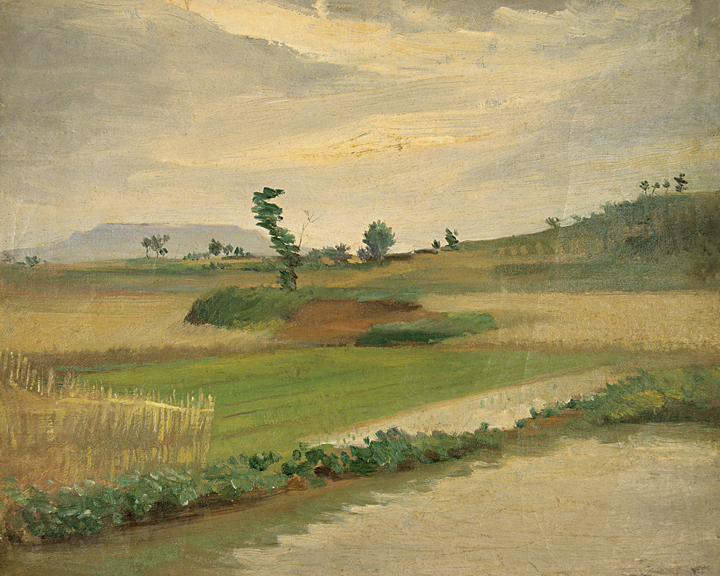
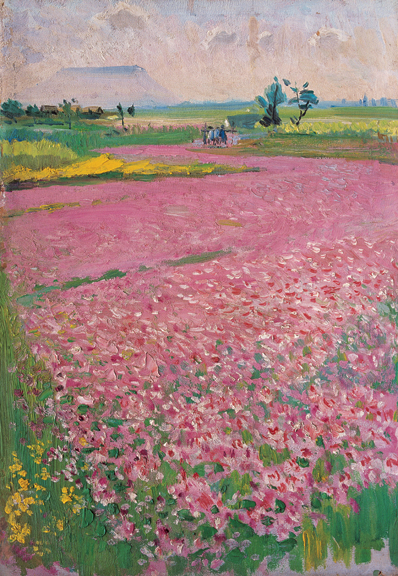
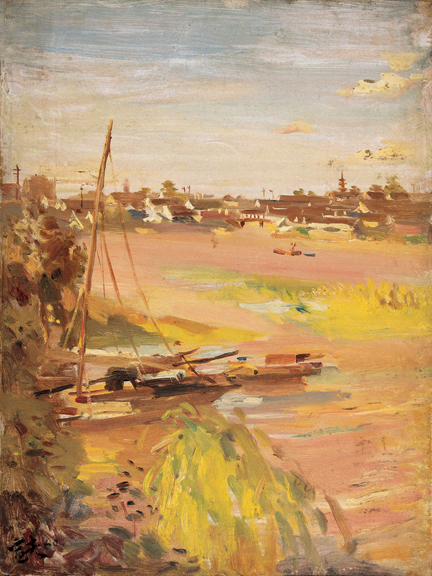
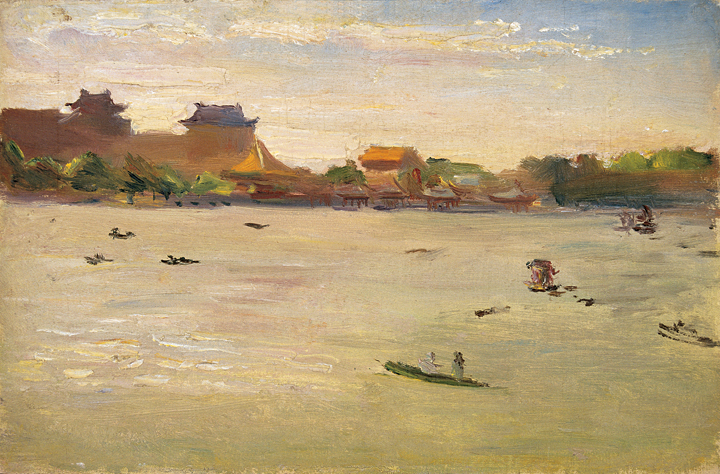
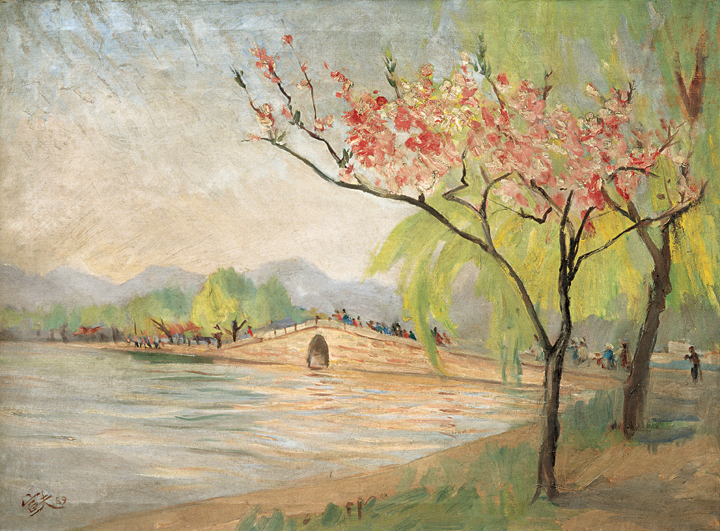
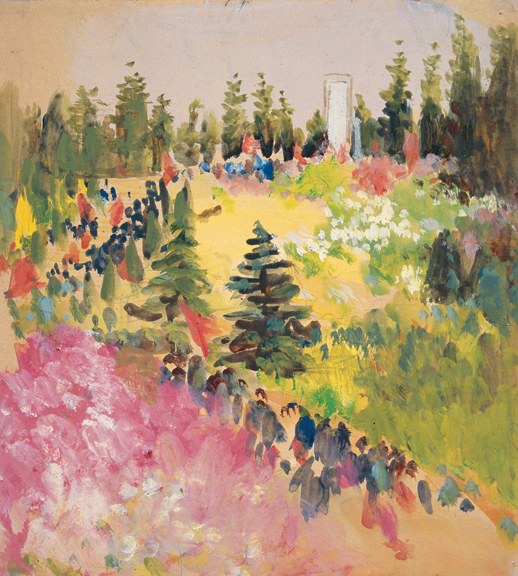
Mr. Qin’s landscape painting at the time illustrated the achievements in utilizing Chinese traditional style and more strongly, his expressing feelings of his own. Chinese paintings always have the nature of poetry, Mr. Qin applied this characteristic in his landscape oil paintings. “We can not only talk about the nationalization without traditions”, said Mr. Qin Xuanfu, “nor can we only focus on themes without appropriate colors and brush style, which are like ink and pen in Chinese paintings. It is no Chinese painting if there is no ink and pen. The same is true for oil painting; it is not a good oil painting if there is no subtle brush style.”
(The landscape oil painting “The scenery of FangShan”, The oil painting “Fangshan”, The oil painting ”The Chiese milk vetch”, The oil painting “Scenery of Beihai Park”, The oil painting “scenery of Nantong”.
In 1963, Mr. Qin went to Hangzhou and created a series of landscapes paintings in which he applied this style.
His painting “Fishing in Geling” poetically depicts scenery in the southeast of China Two fishermen, wearing straw rain cloak, standing on the little boats are pulling the fish-net in the waves with the background of rainy hills. One also can find that the similar brush style and its spirit in this painting are well represented in typical Chinese paintings.
(The oil painting “Fishing in Geling”)

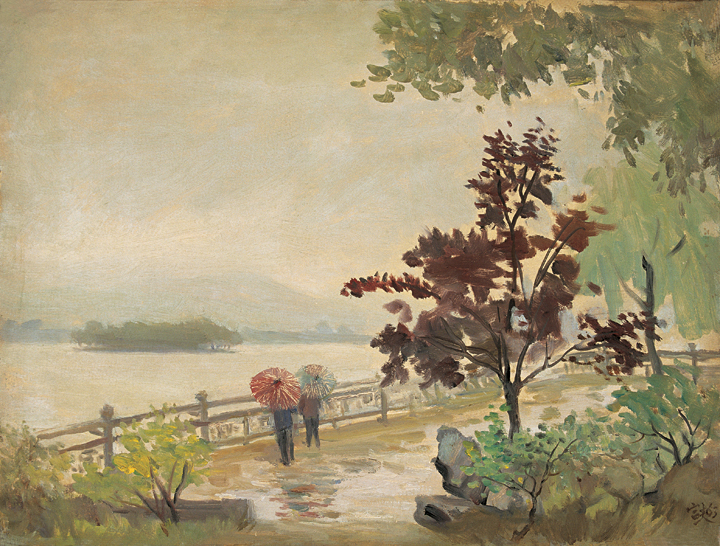
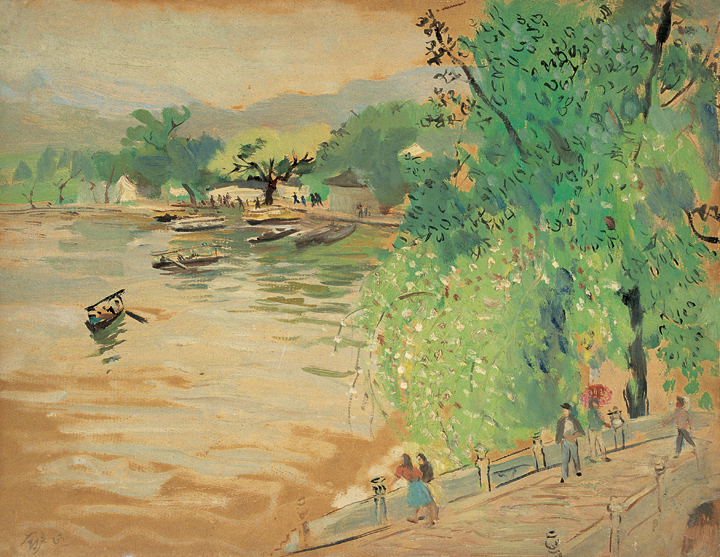
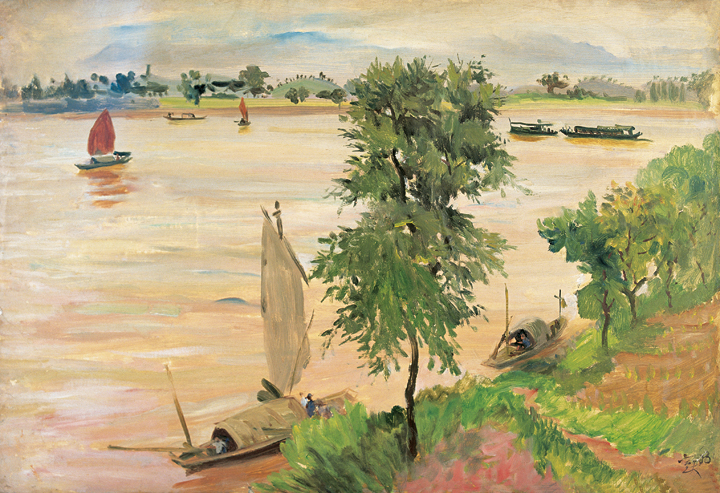

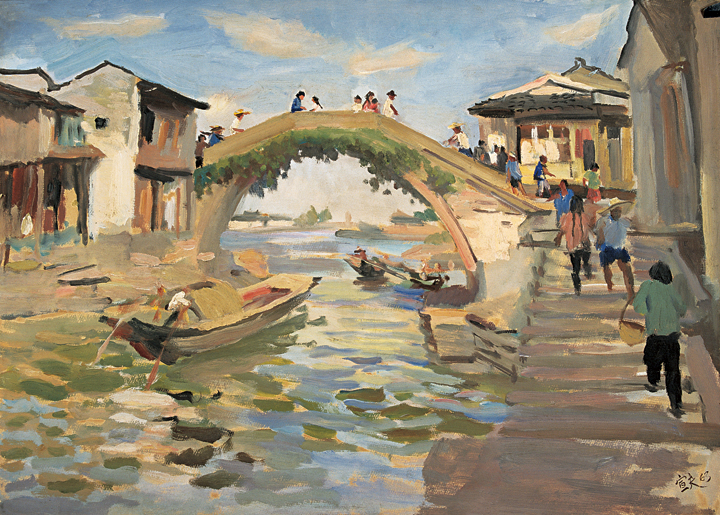
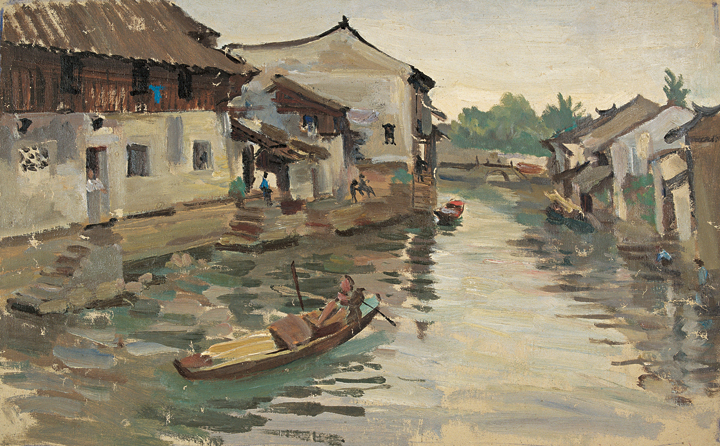

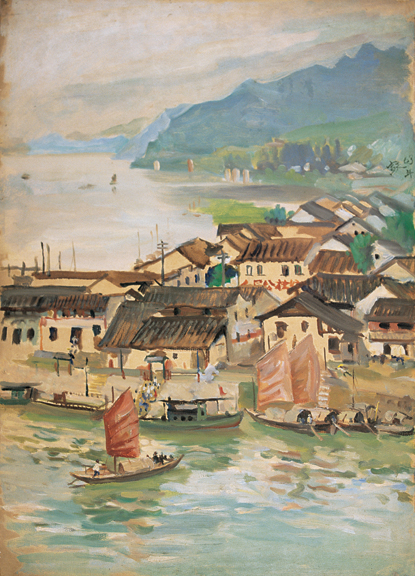
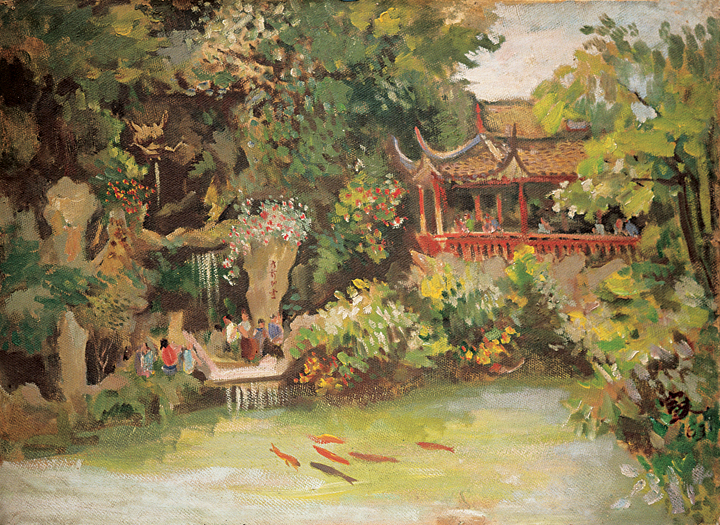
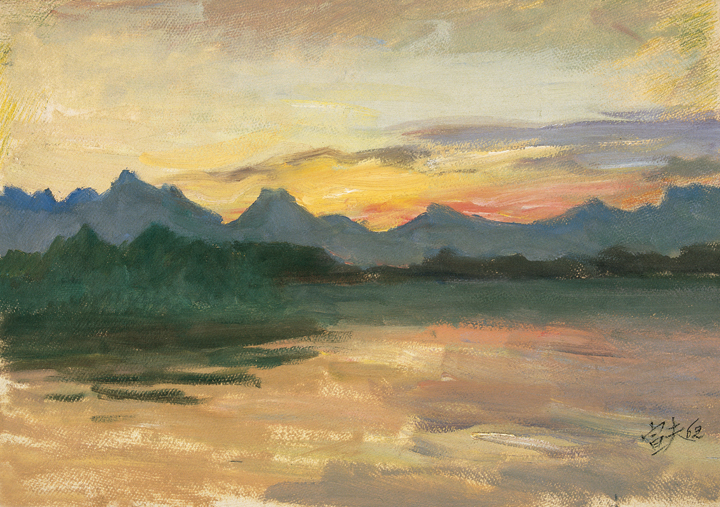

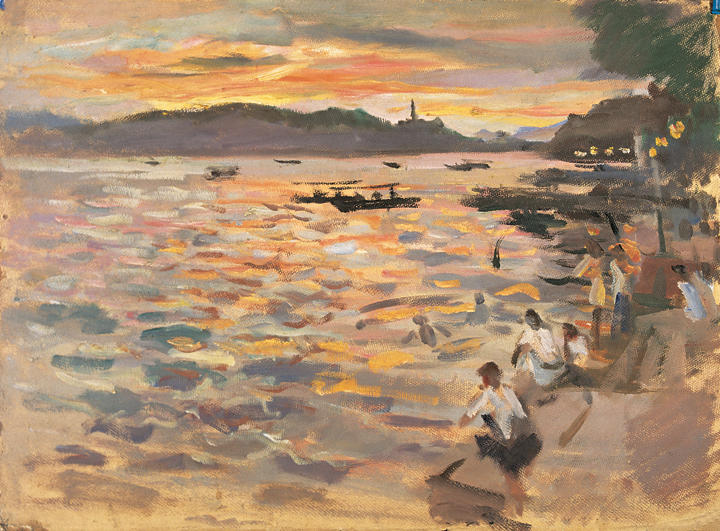
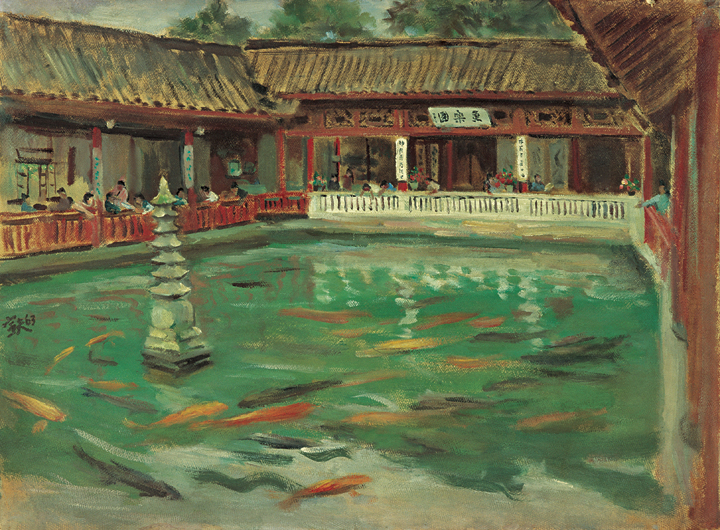
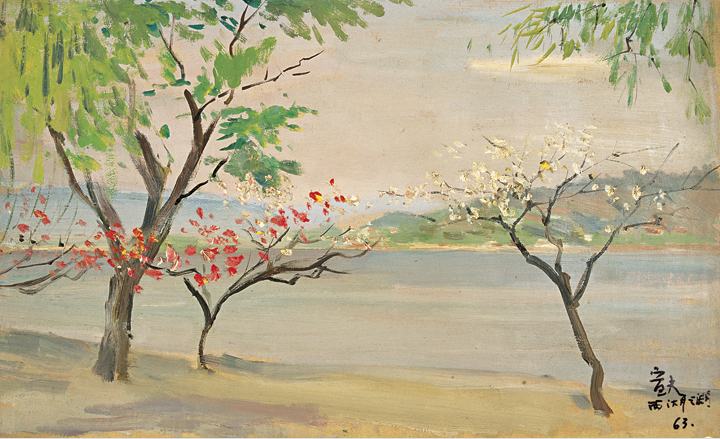
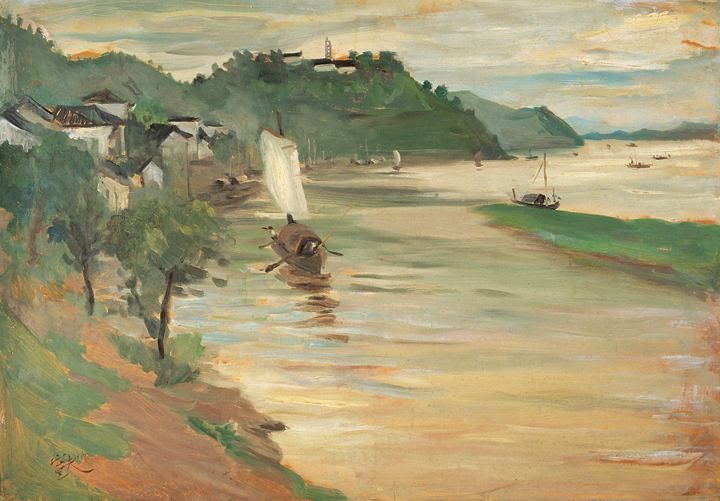
This style can also be found in such paintings as “Autumn Moon in West Lake(A) ”, “Spring Morning in Sudi (Dike)”,”The First Bridge of Sudi”, “The Red Sail”, “Ke Bridge in Shaoxin”, “The Little Boat of Shrimp Sale”, and “The Spring Shower”. In “The Spring Shower” he focuses more on expressing his feelings; using a few free and unstrained strokes, to create a poetic picture of mountains amid smoky rain, with willow’s branches in foreground.
(The oil painting “Autumn Moon in West Lake (A)”, “spring Morning in Sudi(Dike)”, “The First Bridge of Sudi”, “The Red Sail”, “Ke Bridge in Shaoxin”, “The little boat of shrimp Sale”, “The Spring shower”)
His painting “Fuchun River with Tongju Mountain” is another oil painting that focuses on expressing his strong feelings and it is also rich in poetry. The depiction of water, sky, red earth and green landscape is quite elegant and vivid.
At the end of 1963, Mr. Qin Xuanfu held his second exhibition of oil paintings in the gallery of Jiangsu Province. As for the exhibition, Mr. Song Zhengying, the well known artist at the time commented ,” Mr. Qin Xuanfu attempted to integrate the quality of expressing feelings in Chinese paintings into his own and tried to create art works with the quality and style of Chinese fine arts. This style is represented especially in his paintings created in Hangzhou in 1963.”
During this period, Mr. Qin Xuanfu also published, as an art critic, a few art critical articles such as “How to Judge on Michelangelo” and “After Lu Sibai Oil Painting Exhibition”.
In 1963 Mr. Qin was appointed editor of “Chinese Vocabulary Encyclopedias,” where he was in charge of compiling and editing western fine arts history, which was published after 16 years in 1979.
1. A few characteristics of the second stage of Mr. Qin Xuanfu’s art creation are as follows: with enthusiasm and the firm belief in realism in art creation, Mr. Qin Xuanfu made great achievements.
2. His style is more joyful, more toward nationalization, more straightforward, and more mature than before.
The art critic Shao Dajian commented,” His art works are unique, his painting style is restricted, but not constrained by realism, the strokes are free and daring, but full of his feelings. The colors are bright and joyful, reflecting his personality and style. His art creation is changing to the direction of expressing his feelings, and this change is, of course, internal and gradual.”



